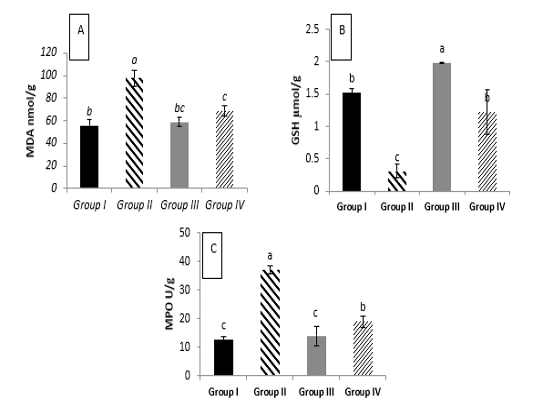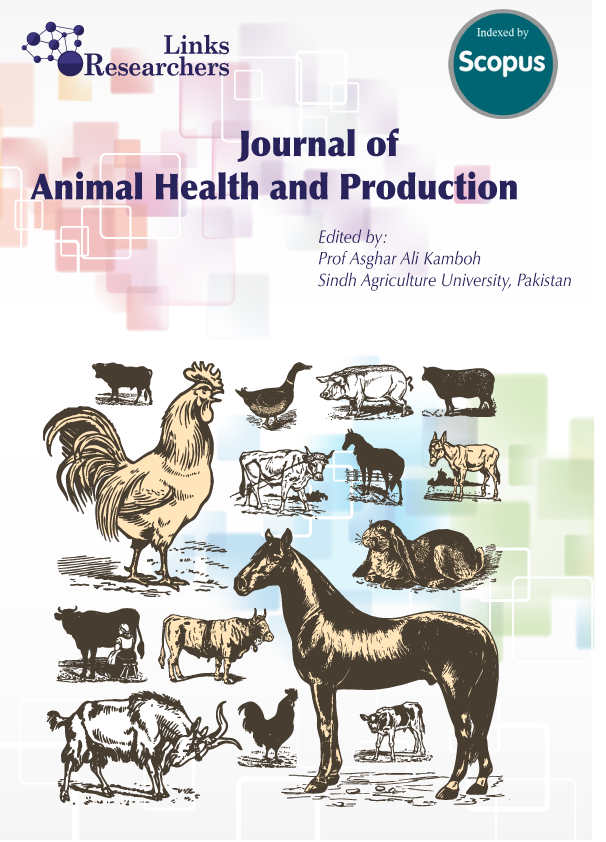Synergistic Hepatoprotective Effect of Chrysin and Ginkgo biloba Against Lead Toxicity in Adult Wistar Rats
Synergistic Hepatoprotective Effect of Chrysin and Ginkgo biloba Against Lead Toxicity in Adult Wistar Rats
Afrah Adil Hassan1*, Hawraa F. H. Alowaid1, Majdy Faisal Majeed2
Measure of antioxidant enzymes concentration in Wistar rats. (A) MDA level (nmol/g); (B) GSH level (µmol/g); and (C) MPO activity (U/g). Values are presented as means ± S.D of 6 individuals. Different letters indicate significant (p≤0.05) differences, and similar letters indicate no significant differences among experiment groups
Measure of plasma pro-inflammatory cytokines concentration in Wistar rats. (A) TNF-alpha, and (B) interleukin 1-beta (IL-1β) levels. Values are presented as means ± S.D of 6 individuals. Different letters indicate significant (p≤0.05) differences, and similar letters indicate no significant differences among experiment groups.
(a): Photomicrograph of a liver from the control group represents normal architecture (circle). (e, f): A section of the liver from group III on day 30 showing semi-normal architecture, except for slight expansion of the hepatocytes sinusoids (arrow) and cytoplasmic degeneration (thick arrow). (c, d): section of liver from group II at day 30 showing acute hepatocyte necrosis (arrow), cytoplasmic degeneration (thick arrow), expansion, and necrosis of blood vessels (circle). (g): A section of the liver from group IV on day 30 showing a limited extent of hepatocyte necrosis (arrow), and cytoplasmic degeneration (thick arrow), which also showed limited expansion and degeneration of blood vessel walls (circle). H and E. X400, (Scale bar 25u).










